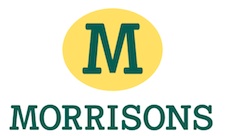UK DIY News
Barclays: Consumers Have Cut Back Ahead Of November's Budget

- All seven measures of consumer and economic confidence tracked by Barclays fell for the first time since August 2022
- Two in five consumers are adjusting their finances ahead of the Autumn Budget, with one in three holding off on major purchasing decisions until after the announcement
- Retail recorded its steepest fall (-0.5 per cent) since November 2024, with department stores (-7.8 per cent) and discounters (-7.6 per cent) both in decline
- Two thirds of shoppers say their festive favourites are getting smaller despite price rises, as majority notice chocolate being hit by both ‘shrinkflation’ and ‘skimpflation’
- The Barclays Consumer Spend report combines hundreds of millions of customer transactions with consumer research to provide an in-depth view of UK spending
Consumer card spending fell -0.8 per cent year-on-year in October, a slight drop from September (-0.7 per cent), and considerably lower than the latest CPIH inflation rate of 4.1 per cent. Essential spend declined (-2.5 per cent) for the sixth consecutive month, while growth in discretionary spending was flat (0.1 per cent), as a combination of pre-budget anticipation, upcoming Black Friday deals and milder weather led consumers to delay purchases or cut back across a number of categories.
In October, all seven measures of consumer and economic confidence tracked by Barclays declined for the first time since August 2022, when the Bank of England announced its biggest base rate increase in 27 years.
Confidence in the strength of the UK (22 per cent), European (28 per cent) and global (23 per cent) economy all declined month-on-month, however confidence in household finances fell most significantly, from 74 per cent to 63 per cent. The proportion of those confident in their job security and ability to spend on non-essential items both reached their lowest points since 2023, at 44 per cent and 51 per cent respectively (down from 47 per cent and 60 per cent in September).
| 2025 consumer confidence measures (research conducted 24th-28th October) | ||||||||||
| Jan | Feb | Mar | Apr | May | Jun | Jul | Aug | Sep | Oct | |
| Household finances | 70% | 75% | 70% | 70% | 67% | 73% | 72% | 73% | 74% | 63% |
| Job security | 47% | 48% | 46% | 48% | 47% | 50% | 48% | 48% | 47% | 44% |
| Non-essential spending | 56% | 59% | 58% | 60% | 56% | 59% | 58% | 60% | 60% | 51% |
| Ability to live within one’s means | 74% | 77% | 73% | 74% | 74% | 76% | 75% | 77% | 78% | 70% |
| Strength of the UK economy | 21% | 25% | 23% | 24% | 28% | 25% | 22% | 28% | 25% | 22% |
| Strength of the European economy | 25% | 28% | 30% | 27% | 30% | 27% | 25% | 31% | 29% | 28% |
| Strength of the global economy | 21% | 26% | 24% | 21% | 26% | 23% | 21% | 28% | 26% | 23% |
Those lacking confidence in household finances cited the cost of living (54 per cent), a pessimistic outlook for the year ahead (41 per cent), and inflation outpacing wage growth (30 per cent) as their top causes for concern. In contrast, those who do feel confident listed having little or no debt (58 per cent), careful budget management (50 per cent) and having a savings buffer (43 per cent) as the main contributing factors. Baby boomers are the most likely generation to say they’re confident in their household finances, at 71 per cent.
| General population | Gen Z(18-27) | Millennials (28-43) | Gen X(44-59) | Baby Boomers + Silent Gen(60+) | |
| 1. | Low / no debt(58%) | Low / no debt(35%) | Budget management(41%) | Low / no debt(61%) | Low / no debt(80%) |
| 2. | Budget management (50%) | Budget management (32%) | Stable employment (40%) | Budget management (50%) | Budget management (64%) |
| 3. | Savings / emergency fund (43%) | Savings / emergency fund (26%) | Low / no debt(37%) | Grasp of finances (47%) | Savings / emergency fund (55%) |
| 4. | Grasp of finances (41%) | Stable employment (24%) | Savings / emergency fund (35%) | Savings / emergency fund (46%) | Grasp of finances (51%) |
| 5. | Stable employment (26%) | Grasp of finances (21%) | Grasp of finances (33%) | Stable employment (40%) | Investment pot/ISA (26%) |
In anticipation of the Budget, two fifths of consumers (41 per cent) are adjusting their finances. Of this group, 37 per cent are making cutbacks to reduce spending, 33 per cent are putting off discretionary purchases and 30 per cent are building up a savings buffer. One third (33 per cent) overall say they’re holding off on making major financial decisions until after the Budget, rising to 44 per cent for Gen Z.
Skimpflation and shrinkflation hit festive favourites
Almost six in 10 (57 per cent) consumers say they’re spending more on groceries in comparison to last year, estimating their household now spends £74.70 weekly on average. One in four (23 per cent) households report spending over £100 per week, while 16 per cent manage to cap spending at £30 or less.
Three in four shoppers (74 per cent) have noticed food products they buy becoming more expensive in recent months, while 61 per cent have noticed the rise of ‘skimpflation’, where the quality of certain products or ingredients declines, without a corresponding drop in price.
Over half (53 per cent) believe chocolate products are now lower quality than they used to be, and 52 per cent say they would be less inclined to buy snacks and treats made with ‘chocolate-flavoured coating’ instead of real chocolate.
Two thirds (65 per cent) report that festive food and drink products – such as biscuit tins and chocolate tubs – have been impacted by ‘shrinkflation’ and are getting smaller, but cost the same or more than they used to.
Shoppers brace for Black Friday deals
The overall retail category recorded its steepest fall (-0.5 per cent) since November 2024 with clothing (0.1 per cent) flat, and department (-7.8 per cent) and discount stores (-7.6 per cent) both in decline. The mild Autumn weather led shoppers to delay seasonal purchases, while 26 per cent said they’ve been saving money to spend during the Black Friday/Christmas sales period. New clothes and accessories emerged as the top non-essential cutback in October, chosen by 53 per cent of those who say they’re reducing their discretionary spending (48 per cent).
Despite the overall slowdown, the healthy & beauty category maintained strong growth, up 7.6 per cent. This comes as 44 per cent of consumers say they are more focused on wellbeing this year, rising to 55 per cent among Gen Z. Furniture stores were another bright spot, enjoying their eleventh consecutive month of growth, up 5.3 per cent, while garden centre spending increased 7.6 per cent year-on-year, helped by a warm start to October.
The overall hospitality & leisure sector saw modest growth of 1.2 per cent, led by entertainment (4.7 per cent) and travel agents (7.2 per cent), which have rebounded in response to consumers’ demand for financial protection when booking holidays. Golf clubs, however, emerged as the month’s standout success story, enjoying growth of 21.3 per cent, following Team Europe’s historic victory in the Ryder Cup.
Julien Lafargue, Chief Market Strategist, Barclays Private Bank and Wealth Management, said: “Consumers and businesses alike appear to have adopted a ‘wait and see’ approach ahead of the Autumn Budget. While this is generating some short-term headwinds, it could position the UK economy for a rebound once the uncertainty lifts, potentially setting the stage for a strong festive season.”
Karen Johnson, Head of Retail at Barclays, said: “Looking ahead to the Autumn Budget, consumers are taking a considered approach to spending. While confidence declined in October, we’re seeing resilience within categories linked to health and wellbeing, suggesting people are still willing to invest in the areas that matter most to them. With Black Friday and Christmas on the horizon, we expect spending patterns to shift again as shoppers seek out value and seasonal offers.” Overall growth figures
| Spend Growth | Transaction Growth | |
| Essential | -2.5% | -4.3% |
| Non Essential | 0.1% | -1.6% |
| OVERALL | -0.8% | -2.6% |
| Retail | -0.5% | -2.0% |
| Clothing | 0.1% | 2.4% |
| Grocery | -2.1% | -3.1% |
| -2.6% | -4.8% |
| 2.4% | 5.5% |
| Household | 0.6% | 1.7% |
| -0.5% | -4.7% |
| -3.3% | 7.0% |
| 5.3% | 0.7% |
| 7.6% | 2.2% |
| General Retailers | -1.9% | -1.3% |
| 0.6% | 1.3% |
| -7.8% | -5.4% |
| -7.6% | -8.3% |
| Specialist Retailers | 5.4% | -2.2% |
| 7.6% | -1.8% |
| -5.4% | -4.5% |
| 8.2% | -2.2% |
| Hospitality & Leisure | 1.2% | -3.5% |
| Digital Content & Subscription | 2.9% | 0.1% |
| Eating & Drinking | -0.3% | -4.7% |
| 0.8% | -2.7% |
| -1.3% | -3.1% |
| -1.2% | -8.0% |
| Entertainment | 4.7% | 3.1% |
| Hotels, Resorts & Accommodation | -0.7% | -4.9% |
| Travel | 2.0% | -5.7% |
| 7.2% | 28.5% |
| -3.3% | -7.5% |
| -2.0% | -10.7% |
| 2.4% | 2.2% |
| Other | -4.2% | -2.9% |
| Fuel | -5.2% | -5.9% |
| Motoring | -5.9% | 2.4% |
| Other Services | -3.0% | -2.7% |
| Insperiences | 2.9% | -3.3% |
| Online | 0.6% | 1.0% |
| Face-to-Face | -1.9% | -4.2% |
Source : Barclays
Image : William Barton / 1329105146 / Shutterstock
I find the news and articles they publish really useful and enjoy reading their views and commentary on the industry. It's the only source of quality, reliable information on our major customers and it's used regularly by myself and my team.











































